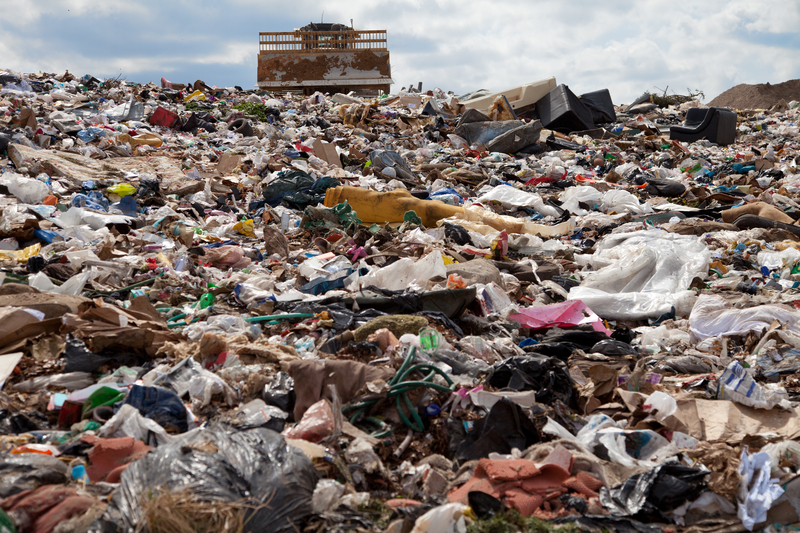Turning PPE Waste Disposal Into an Eco-Friendly Habit: A Comprehensive Guide
The global pandemic accelerated the use of Personal Protective Equipment (PPE) like masks, gloves, and face shields. This necessity, while vital for health, massively increased the volume of single-use plastics entering our waste streams. PPE waste disposal has now become a pressing environmental concern. But what if we could transform this challenge into an eco-friendly habit? This article explores practical ways to manage, dispose of, and even reduce PPE waste responsibly, helping readers turn an obligation into a planet-positive routine.
Why PPE Waste Disposal Matters
At the height of the COVID-19 pandemic, estimates suggest that globally, we used over 129 billion face masks and 65 billion gloves every month. Unfortunately, most of these items are made from non-biodegradable materials such as polypropylene, which can persist in the environment for hundreds of years.
- Wildlife hazard: Disposed masks and gloves are frequently found in rivers and oceans, causing entanglement, ingestion, and suffocation of marine and terrestrial animals.
- Microplastic pollution: As PPE degrades, it releases microplastics that contaminate water sources and food chains.
- Waste management overload: Municipal systems struggle to deal with the deluge, leading to unsafe disposal practices like open burning or illegal dumping.
Clearly, PPE waste disposal is much more than a personal inconvenience; it's a global environmental issue. Understanding its impact is the first step in developing eco-friendly disposal habits.

The Environmental Impact of PPE Waste
Understanding the Problem
Before tackling solutions, let's look closer at how improper PPE disposal harms the environment:
- Land Pollution: Disposable masks and gloves discarded in landfills or on the streets break down very slowly, occupying landfill space and leaching chemicals into the soil.
- Waterway Contamination: Rainwater carries carelessly thrown PPE into sewage systems and water bodies, contributing to aquatic pollution and threatening marine life.
- Air Pollution: Some waste, particularly in places lacking adequate waste management infrastructure, is incinerated in open fires, releasing toxic substances into the air.
Statistics to Consider
- Plastic waste surge: UN reports note that the pandemic led to a 30% increase in plastic waste.
- Mask decomposition: A single mask can take up to 450 years to decompose.
- Animal risks: Littered gloves found in waterways have been mistaken for jellyfish by sea turtles, leading to fatal outcomes.
How to Turn PPE Waste Disposal Into an Eco-Friendly Habit
1. Know What Counts as PPE Waste
A crucial step in responsible PPE waste management is distinguishing between regular household waste and PPE-specific waste. Common PPE items include:
- Single-use face masks (surgical, N95, KN95, etc.)
- Disposable gloves (latex, nitrile, vinyl)
- Plastic face shields and goggles
- Protective gowns
- Wipes and tissue used for sanitization
Knowing which items need special disposal is the foundation of an eco-friendly approach to PPE waste recycling and reduction.
2. Practice Safe and Responsible PPE Waste Collection
Use a separate, clearly marked container or bag for PPE waste at home and work. This helps to prevent accidental contamination and makes waste sorting easier for disposal staff. Tips for collection:
- Use dedicated bins: Label a bin "PPE Waste Only" and keep it closed with a lid.
- Avoid compressing waste: Compressing may cause items to break, increasing exposure risks for handlers.
- Seal and segregate: Double-bag your PPE waste to minimize leaks and keep it separate from recyclables and organic waste.
3. Follow Local PPE Waste Disposal Guidelines
Many municipalities have established specific PPE waste disposal policies since the spread of COVID-19. Research and adhere to your local guidelines, which may include designated drop-off spots or scheduled collections.
- Check municipal resources: Visit your city or county's waste management website for details.
- Ask workplaces or school facilities: Many institutions provide special PPE disposal containers.
- Comply with health protocols: Securely tie bags and wash hands thoroughly after disposal.
4. Reduce and Reuse: The First Step Towards Sustainability
The most impactful step is simply to reduce how much PPE waste you generate. Consider alternatives when possible:
- Opt for reusable masks: Choose fabric masks with replaceable filters or masks rated for multiple uses (wash daily).
- Washable gloves: Use heavy-duty, reusable gloves for household or non-medical needs.
- Prioritize need over habit: Only use gloves and disposable PPE when absolutely required; sanitize hands instead whenever possible.
By developing eco-friendly PPE habits at the source, you automatically ease the burden on waste systems.
5. Recycle PPE Waste Where Possible
Most recyclable PPE waste must be separated from regular plastics due to potential biological hazards. Increasingly, innovative recycling programs and companies are offering solutions:
- TerraCycle: Offers Zero Waste Boxes for PPE waste collection, processing items into raw materials for new products.
- Hospital take-back schemes: Some healthcare providers take back used PPE for safe recycling or energy recovery.
- Pilot recycling projects: Look for local or national initiatives developing clean, effective PPE recycling techniques.
*Always check if recycling is available and suitable in your area--never mix contaminated PPE with household recyclables.*
6. Proper PPE Waste Disposal at Home and Work
Adopting eco-friendly PPE disposal habits requires systematic actions both at home and in the workplace. Here's how:
- Home: Store a small, foot-pedal bin lined with a dedicated bag in an accessible location. Make sure family members understand what belongs inside.
- Work: Post signs and provide special PPE disposal bins at entryways, exits, and in high-traffic areas; train staff on correct disposal.
Best practice: If you suspect an item is contaminated (e.g., used while sick), mark the bag and inform your waste collector to ensure proper handling.
7. Don't Forget to Protect Waste Handlers
Part of eco-friendly PPE waste habits is protecting those further down the disposal chain. Make disposal safer:
- Double-bag if possible to reduce risk of tears or leaks.
- Mark bags as "PPE Waste" to alert handlers of possible contamination.
- Wash hands and disinfect bins regularly to minimize transmission risks.
Innovative Ways Communities and Businesses Are Tackling PPE Waste
PPE Waste Collection Drives
Communities are organizing special PPE waste collection days, pop-up drop-off points, and partnerships with recycling companies to recover and process used PPE. This promotes collective responsibility and removes large quantities of hazardous waste from the environment.
- Schools and offices: Encourage participation by hosting educational campaigns and rewards for eco-friendly behavior.
- Neighborhood initiatives: Local leaders can distribute information packs and bins.
Corporate Responsibility and Green Innovation
Progressive businesses are investing in eco-friendly alternatives to traditional PPE:
- Biodegradable PPE: Companies are launching masks and gloves made from materials like bamboo fiber, which break down much faster than plastics.
- Closed-loop recycling: Some large hospitals now send all PPE waste to specialized plants that convert it into fuel or new materials, preventing landfill and incineration.
- Green branding: Firms that adopt eco-friendly PPE disposal systems build positive reputations and lead by example.
Troubleshooting Common PPE Waste Disposal Challenges
What if my city doesn't recycle PPE waste?
Unfortunately, many municipal systems cannot currently recycle PPE due to contamination risks. Your best option is to segregate and securely bag the waste before landfill disposal, ensuring it does not leak or spill. Push for change by contacting local officials or joining environmental campaigns advocating for better waste infrastructure.
Can I compost used masks or gloves?
Most standard masks and gloves contain synthetic fibers and cannot be composted. However, if you use certified biodegradable PPE or masks made only from natural fibers (e.g., 100% cotton), these may be suitable for home or industrial composting. Always read the packaging and local compost guidelines first.
Is burning PPE waste a safe solution?
*No.* Open burning is highly discouraged as it releases harmful toxins and greenhouse gases. If your city has industrial-grade waste-to-energy incinerators with pollution controls, this may be a safer last resort, but preference should be given to reduction and recycling whenever feasible.
How to Encourage Others to Develop Eco-Friendly PPE Disposal Habits
Education is Key
Raising awareness is fundamental for widespread adoption of safe PPE waste disposal practices. Share information via posters, community meetings, and social media. Emphasize the impact on wildlife and public health--visuals are powerful!
Lead by Example
Demonstrate your eco-friendly PPE habit in public spaces. Carry a spare bag for your disposable masks and gloves, and call attention (politely) when others dispose of them irresponsibly.
Collaborate With Local Groups
Work with schools, neighborhood associations, and environmental organizations to host clean-up events, distribute reusable PPE, and lobby for citywide schemes supporting sustainable PPE waste management.
Advocate for Better Policy
Support legislation pushing PPE manufacturers toward more sustainable designs, biodegradable materials, and take-back schemes. Consumer demand and activism drive industry change.

The Future of PPE Waste: Hope on the Horizon
Fortunately, innovation is accelerating:
- Bioplastics: Scientists are creating masks and gloves from plant polymers that compost under industrial conditions.
- Smart recycling: AI-powered robots sort PPE waste with high precision, improving recycling rates.
- Incentive programs: Some governments offer small rewards for returning used PPE to collection points.
Transforming PPE waste disposal from a crisis into an eco-friendly habit is possible if everyone does their part--whether as an individual, business, or policymaker.
Conclusion: Your Role in Eco-Friendly PPE Waste Disposal
As we adjust to new norms, adopting sustainable PPE waste management presents a unique opportunity to protect both human health and the environment. Whether by reducing your reliance on disposable PPE, participating in recycling programs, or simply disposing of masks and gloves correctly, you can make a significant difference.
By turning responsible PPE disposal into a daily eco-friendly habit, we all help safeguard our planet's future. Each act--no matter how small--adds up to cleaner streets, healthier wildlife, and a more sustainable tomorrow.
Quick Checklist for Eco-Friendly PPE Waste Disposal
- Choose reusable PPE whenever possible
- Segregate PPE waste from other trash
- Use dedicated bins and label PPE waste clearly
- Follow local disposal and recycling guidelines
- Never flush PPE down toilets or drains
- Share knowledge and support community initiatives
Let's start today: Turn PPE waste disposal into your next green habit.